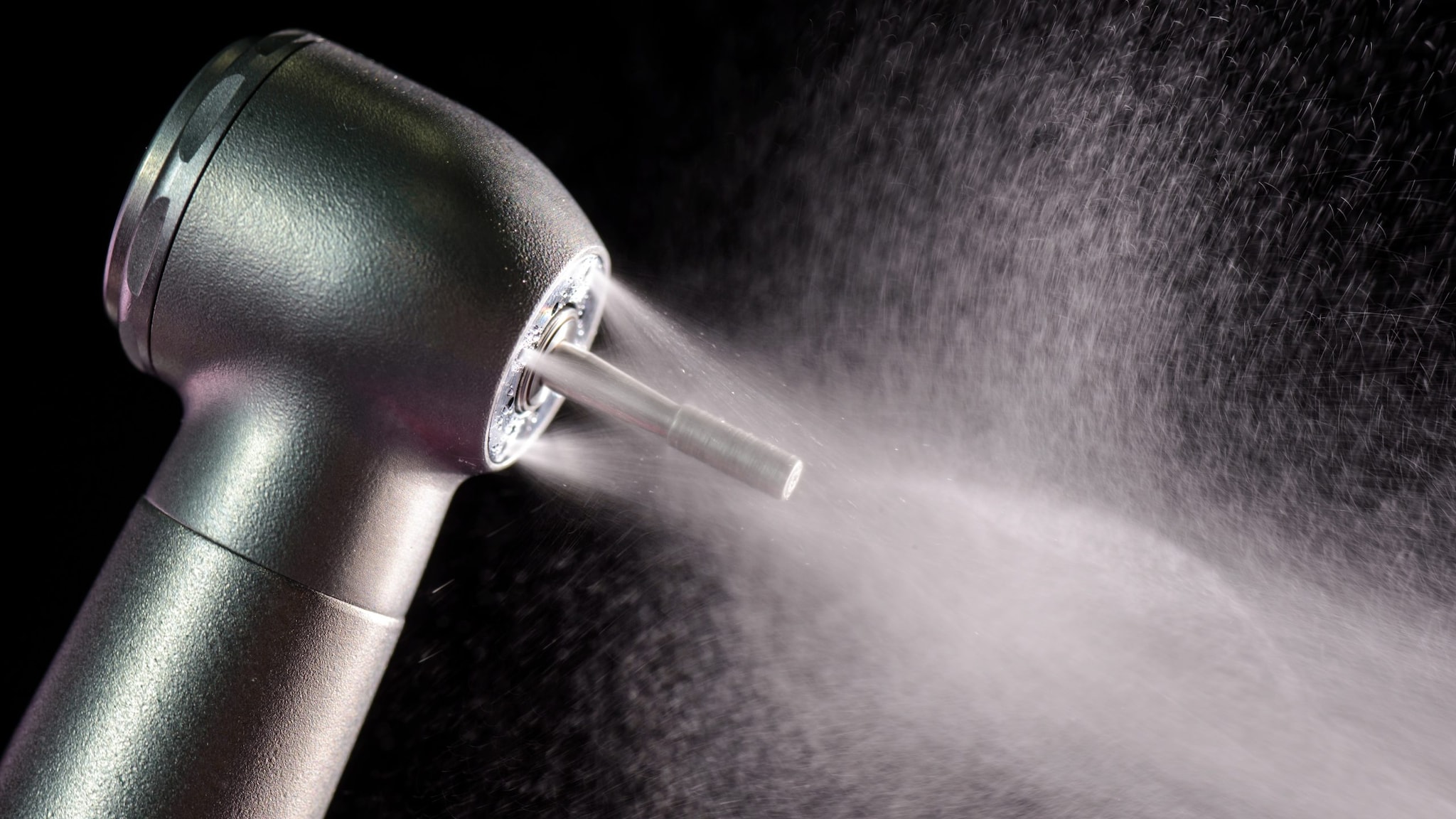Key points
- Dental providers should properly maintain and monitor their dental equipment to ensure that dental treatment water is safe for patient care.
- Dental providers and patients could be placed at risk of adverse health effects if dental unit water is not appropriately treated.

Why it matters
Untreated dental units cannot reliably produce water that meets drinking water standards (which is fewer than 500 CFU/mL of water of heterotrophic water bacteria). On October 31, 2022, CDC released a Health Advisory Notice to communicate the importance of following existing recommendations for maintaining and monitoring dental waterlines.
Background
Biofilm is a thin, slimy film of bacteria that sticks to moist surfaces. Dental unit waterlines have unique characteristics that make them prone to biofilm formation, including long, small-diameter tubing, low flow rates, and frequent periods of stagnation.
High numbers of common water bacteria can be found in untreated dental unit water systems, including Legionella, Pseudomonas aeruginosa, and nontuberculous Mycobacteria. These bacteria can cause serious, sometimes life-threating infections.
Contaminated water from dental units has been linked to outbreaks of Mycobacteria infections in children. Case reports also document infections with Mycobacteria and Legionella following endodontic procedures, third molar extractions, and general dental work. In these reported cases, water samples taken from the dental clinics demonstrated levels of bacteria much higher than the recommended levels and reported breakdowns in infection prevention procedures to maintain and monitor dental water quality. These reports highlight the need for training to improve understanding of the underlying principles of dental unit water quality maintenance and monitoring, recommended practices, and their implementation in dental settings.
Recommendations
Dental unit waterlines should be treated regularly with disinfectants to meet the Environmental Protection Agency (EPA) regulatory standards for drinking water (≤500 colony forming units [CFU]/mL of heterotrophic water bacteria).
Dental unit water quality must also be monitored, or tested, routinely as recommended by the equipment manufacturer. This ensures that treatments are working effectively and that the water used in dental procedures meets safety standards. Monitoring dental unit water quality can also help identify problems in performance or adherence with maintenance protocols and provide documentation of compliance.
Dental providers should consult with the dental equipment manufacturer for appropriate methods and equipment to both maintain and monitor the quality of dental water.
Full recommendations regarding dental unit waterlines can be found on pages 28–30 of CDC’s Guidelines for Infection Control in Dental Health-Care Settings—2003 and in the Summary of Infection Prevention Practices in Dental Settings: Basic Expectations for Safe Care.
The Organization for Safety, Asepsis and Prevention's Dental Unit Water Quality White Paper and Recommendations provides further information on this topic.
Special considerations
For surgical procedures, sterile saline or sterile water should be used as a coolant or irrigant. Conventional dental units cannot reliably deliver sterile water even when equipped with independent water reservoirs containing low-microbial or sterile water because the water-bearing pathway cannot be reliably sterilized. Appropriate delivery devices should be used to deliver sterile water during surgery. Examples include bulb syringes; sterile, single-use disposable products; or sterile water delivery systems that bypass the dental unit by using sterile single-use disposable or sterilizable tubing.
Frequently asked questions
There are many commercial products and devices available to disinfect and maintain dental unit waterlines, including:
- Self-contained water systems (e.g., independent water reservoir) combined with chemical treatment (e.g., periodic or continuous chemical germicide treatment protocols).
- Systems designed for single-chair or entire-practice waterlines that condition or treat incoming water to remove or inactivate microorganisms.
- Combinations of these methods.
Available products to treat waterlines include tablet systems, continuous release straws and cartridges, initial and periodic shock treatments, and centralized systems. All products and systems must be used and maintained according to the manufacturer instructions for use (IFUs). If you have questions about the IFUs, contact the manufacturer of the treatment product or device that you are using.
The unit should be treated according to manufacturer IFU, and re-tested immediately after treatment. If a unit remains resistant to treatment over time, it may be necessary to replace waterlines or other water-bearing components.
- Kohn WG, Collins AS, Cleveland JL, et al. Guidelines for infection control in dental health-care settings—2003. MMWR Recomm Rep. 2003; 52(RR-17);1–61.
- US Environmental Protection Agency. National Primary Drinking Water Regulations. Accessed February 13, 2024. https://www.epa.gov/ground-water-and-drinking-water/national-primary-drinking-water-regulations
- Organization for Safety, Asepsis and Prevention. Dental Unit Water Quality: Organization for Safety, Asepsis and Prevention White Paper and Recommendations– 2018. Journal of Dental Infection Control and Safety. 2018;1(1):1–24.
- Hatzenbuehler LA, Tobin-D'Angelo M, Drenzek C, et al. Pediatric dental clinic-associated outbreak of Mycobacterium abscessus Infection. J Pediatric Infect Dis Soc. 2017;6(3):e116-e122.
- Singh J, O'Donnell K, Nieves DJ, et al. Invasive Mycobacterium abscessus Outbreak at a Pediatric Dental Clinic. Open Forum Infect Dis. 2021;8(6):ofab165.
- Pérez-Alfonzo R, Poleo Brito LE, Vergara MS, et al. Odontogenic cutaneous sinus tracts due to infection with nontuberculous mycobacteria: a report of three cases. BMC Infect Dis. 2020;20(1):295.
- Ricci ML, Fontana S, Pinci F, et al. Pneumonia associated with a dental unit waterline. Lancet. 2012;379(9816):684.
